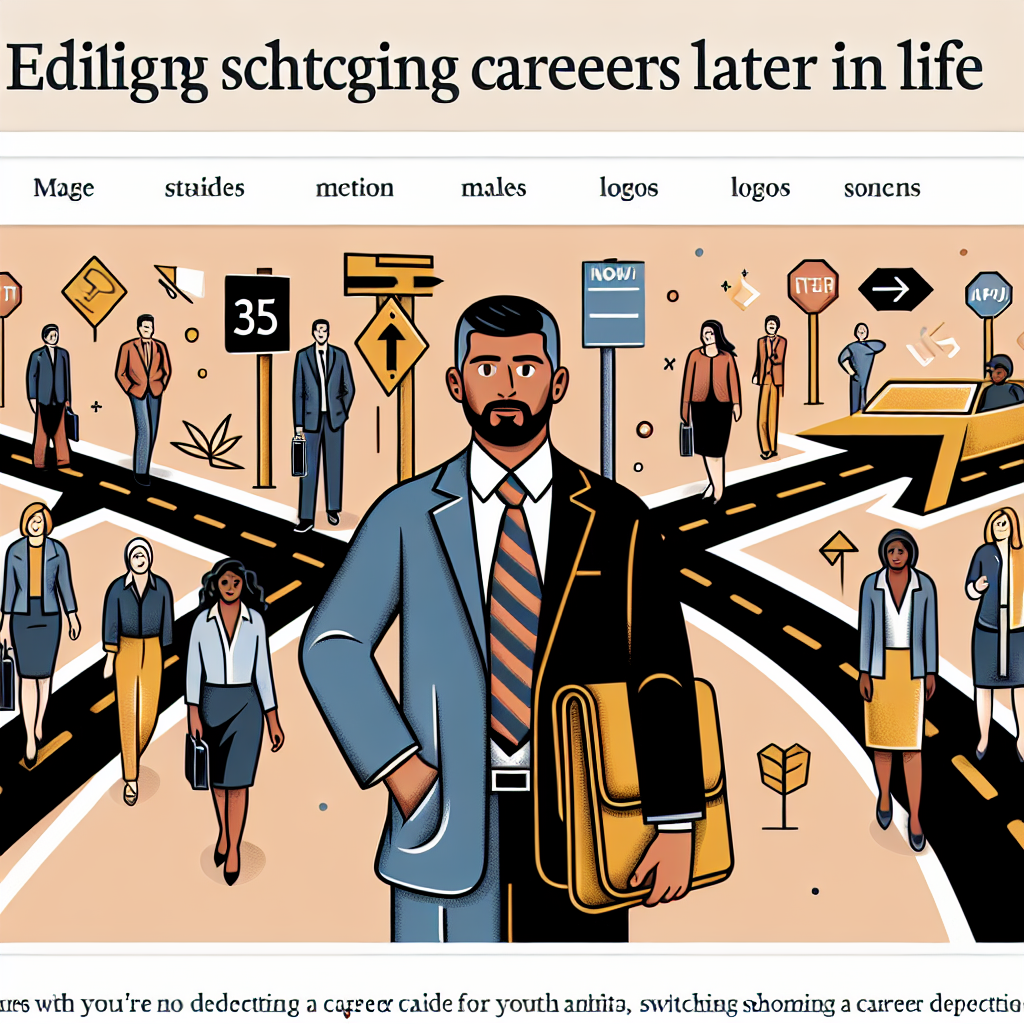Making a significant work change in your thirties can feel like stepping onto unknown ground — exciting, a little scary, and absolutely doable. Starting A New Career At 35? You’re Not Alone. Many people reassess priorities, seek more meaningful work, or chase better work–life balance around this age. This piece outlines practical steps, mindset shifts, and resources to help you navigate the transition with confidence.
Starting a new career in your mid-thirties: why it’s a common shift
By your mid-thirties you’ve often built both professional experience and clearer personal goals. That combination makes it a natural time to pivot. Whether you’re motivated by burnout, a desire for more flexibility, higher pay, or a newfound passion, career reinvention at 35 draws on transferable skills, life experience, and a clearer understanding of what you value.
Assess where you are and where you want to go
Before making any big moves, take structured time to reflect. Inventory your skills, achievements, and the parts of past jobs you enjoyed versus those you didn’t. Speak with peers or a career coach, and research realistic paths that align with your lifestyle and financial needs. This upfront clarity cuts down costly trial-and-error.
Build a practical plan
A strong transition plan balances aspiration with pragmatism. Key components include:
- Skill gap analysis: list what you need to learn and the fastest, most cost-effective ways to acquire those skills (online courses, bootcamps, part-time study).
- Financial runway: estimate how long you can sustain lower or irregular income and create a buffer.
- Network mapping: identify people who can introduce you to your target field and ask informed questions.
- Small experiments: pursue freelance projects, volunteer roles, or short-term contracts to build experience without a full leap.
Translating experience into a new role
One of your strongest assets is experience — even if it’s in a different industry. Employers value problem-solving, communication, leadership, and project management. Learn to translate your accomplishments into language that matches your new target field. Use concrete metrics and narratives that show impact, not just responsibilities.
Upskilling smartly
Rather than trying to become an expert overnight, prioritize credentials and experiences that move you forward most efficiently. Micro-credentials, targeted certificates, and portfolio projects demonstrate competence quickly. Seek programs with strong career support and alumni networks to shorten the job-search timeline.
Use informational interviews and mentorship
Informational interviews can fast-track industry knowledge and build allies. Prepare meaningful questions about daily work, typical career trajectories, and the skills employers value. A mentor in the target field can provide guidance, referrals, and encouragement through setbacks.
Personal resilience and wellbeing during transition
Career change is as much emotional as it is logistical. Expect ups and downs, and build routines that protect your energy. If the stress feels heavy, consult reputable mental health resources for strategies to cope and stay motivated. For general guidance on mental wellbeing and resilience, see the World Health Organization’s mental health fact sheet: mental health fact sheet.
For those exploring later-life reinvention specifically, there are tailored resources that address unique concerns — for example, perspectives and strategies for women considering a fresh start later in life are available at Starting fresh: new career paths for women at 50, which offers inspiration and practical tips for mature career changers.
Practical tips to accelerate progress
- Set milestone goals (3-, 6-, 12-month) and review them monthly.
- Create a targeted resume and LinkedIn profile for each role type you pursue.
- Balance learning with doing: small paid gigs or volunteer roles can validate your fit faster than courses alone.
- Lean on personal and professional networks — referrals beat cold applications.
Final thoughts
Changing careers at 35 is a strategic move, not a reckless gamble. You bring maturity, context, and transferable strengths that younger candidates may lack. By planning, experimenting, and protecting your wellbeing, you can make a shift that’s both sustainable and deeply rewarding.
FAQ
- How long does a career change typically take? It varies: some people move within months through networking and skill-focused projects; others take a year or more if retraining is required. Set flexible milestones rather than hard deadlines.
- Will employers view a switch negatively? Not necessarily. Many employers value diverse experience and persistence. Present your story clearly, emphasize transferable skills, and show recent evidence of competence in the new field.
- Is it too late to change fields if I have family responsibilities? No — many people successfully manage transitions with family commitments by using phased approaches: part-time study, freelancing, or lateral moves that build toward the target role.



